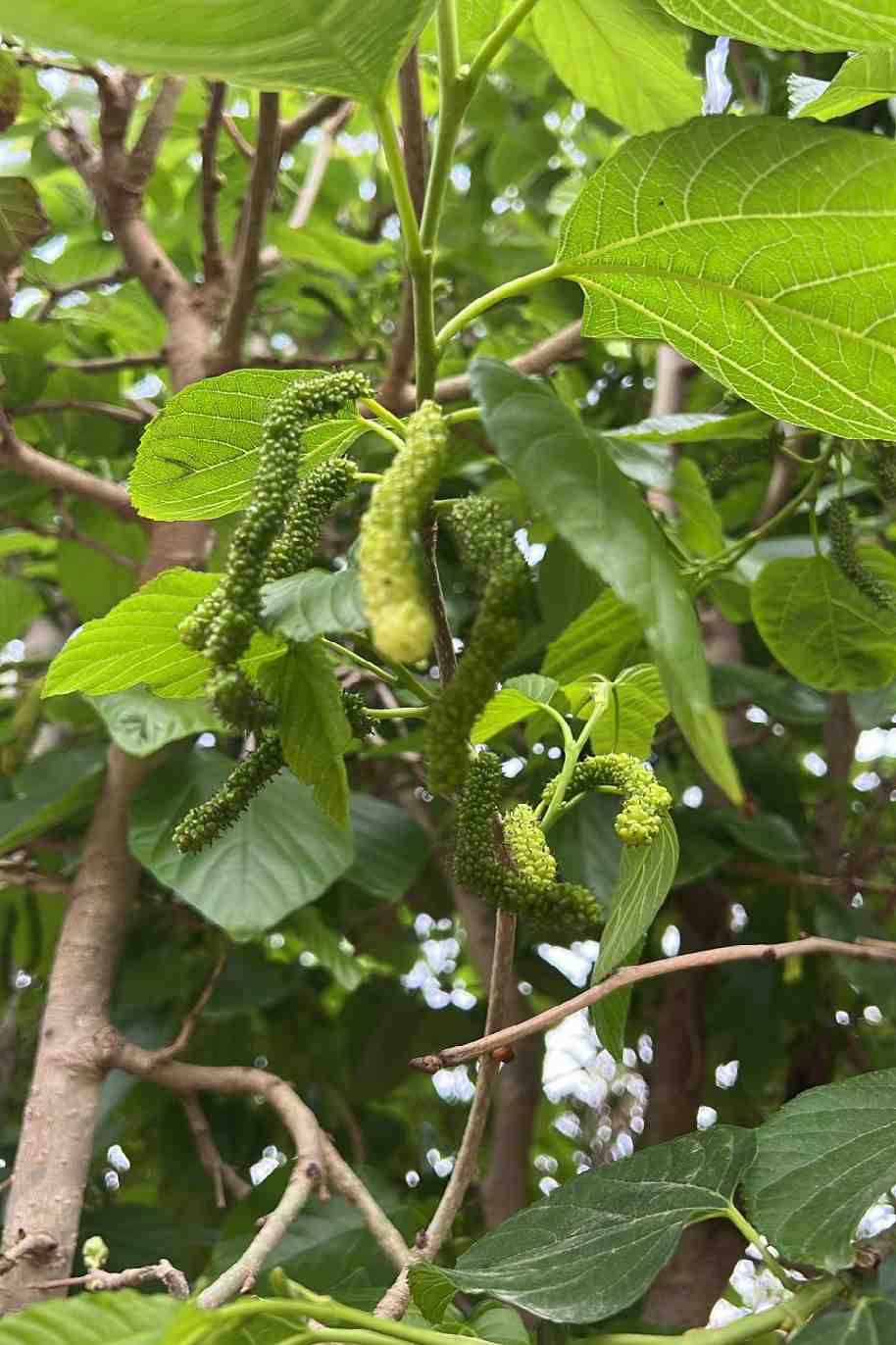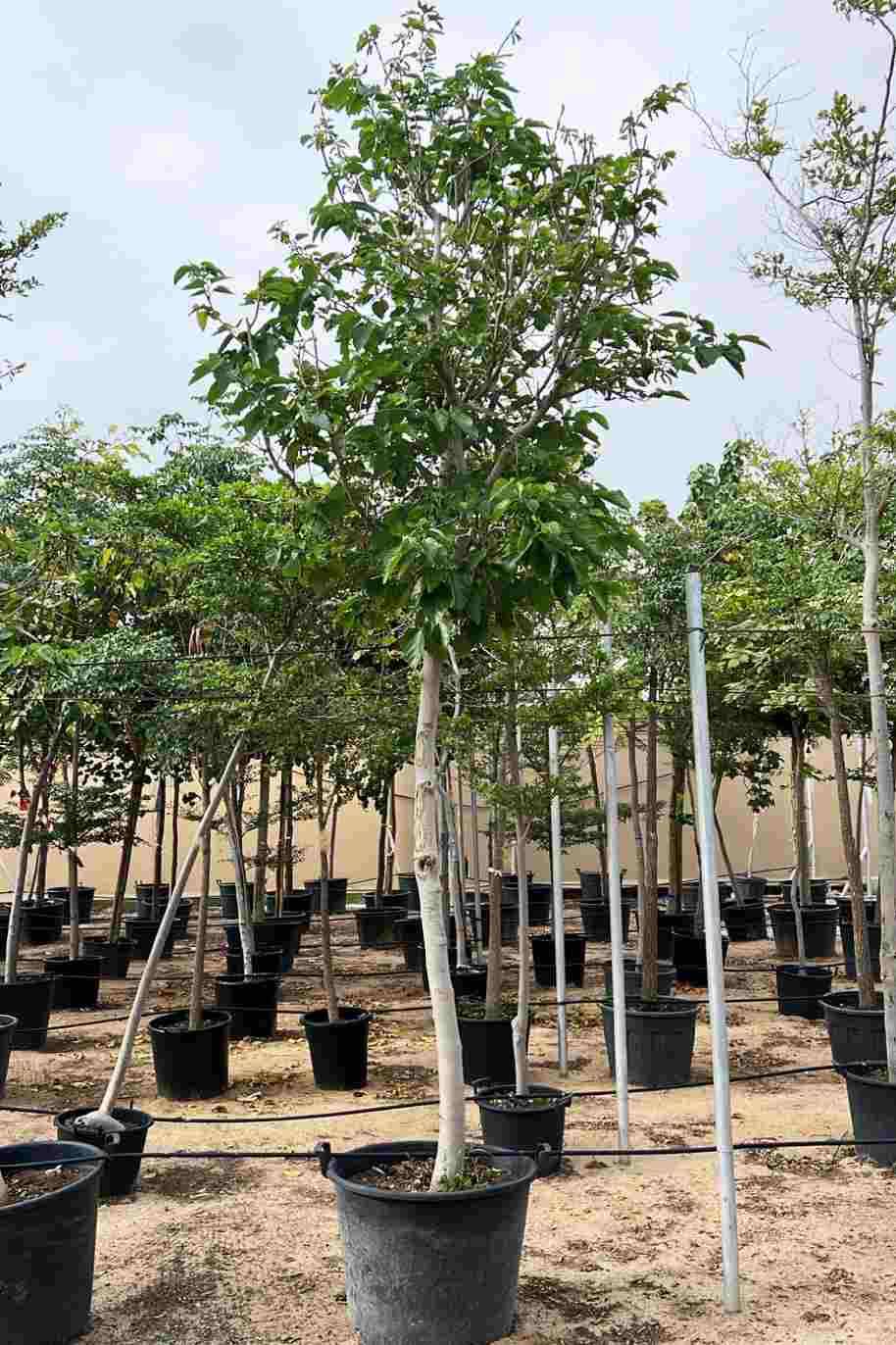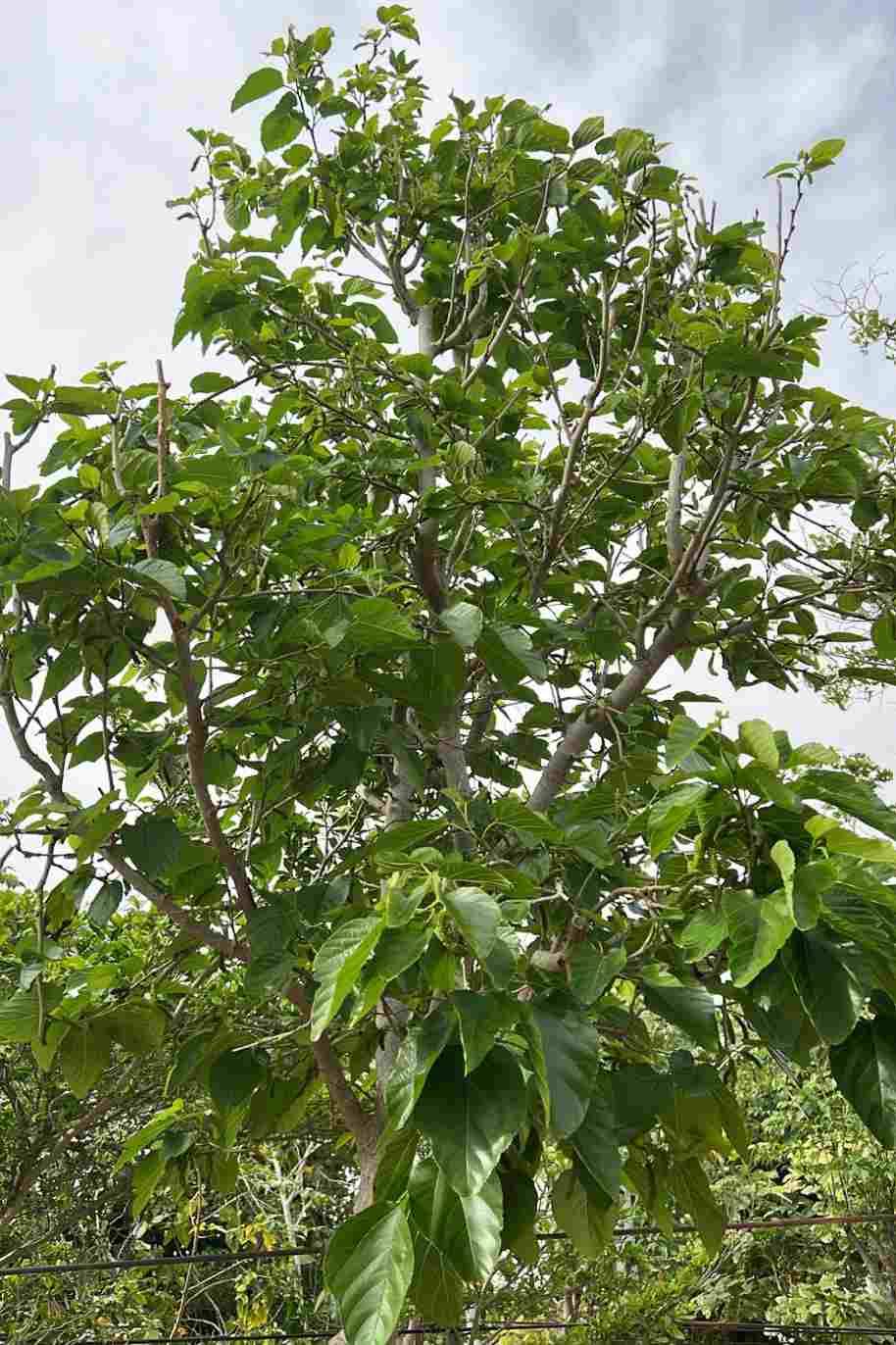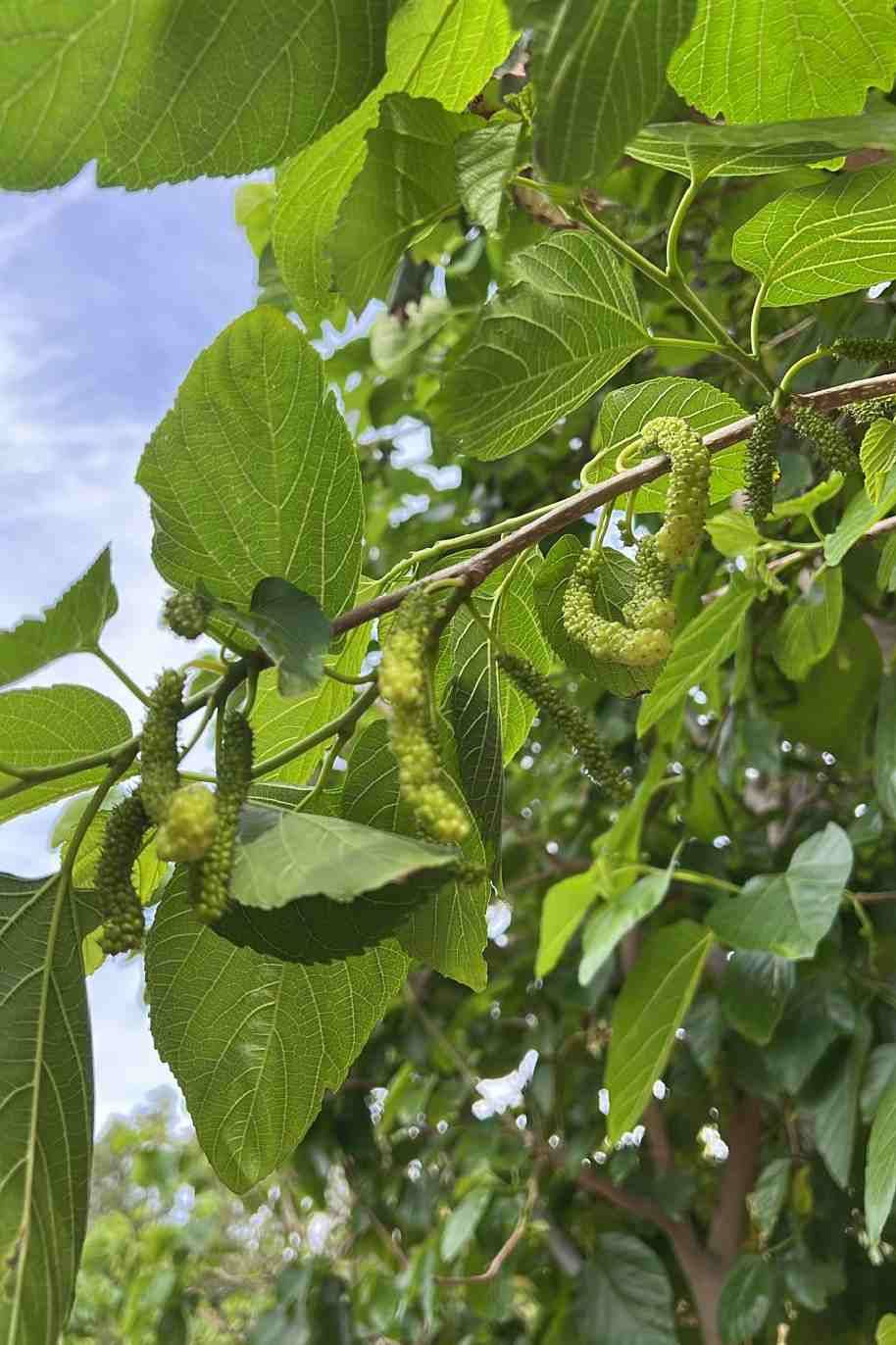Plant Bio
Morus alba, commonly known as the White Mulberry Tree, is a deciduous tree belonging to the Moraceae family. Native to China, it has been cultivated for thousands of years for its edible fruits and as a food source for silkworms. The White Mulberry Tree is prized for its rapid growth, attractive foliage, and delicious fruits. Here's a description:
Foliage: The White Mulberry Tree features glossy, serrated leaves that are typically lobed and heart-shaped. The foliage varies in color from bright green to deep green, with new growth often exhibiting a reddish tint. The leaves provide a lush canopy during the growing season and turn yellow before dropping in the fall.
Flowers: In spring, Morus alba produces small, inconspicuous flowers that are greenish-yellow in color and borne in clusters called catkins. The flowers are wind-pollinated and not particularly showy, but they are essential for fruit production.
Fruits: The fruits of the White Mulberry Tree are cylindrical or oblong berries that ripen from white to pink, red, purple, or black, depending on the variety. They are sweet and juicy with a unique flavor that varies from mildly sweet to tart. The fruits are often enjoyed fresh, dried, or used in jams, jellies, pies, and other culinary creations.
Growth Habit: Morus alba is a fast-growing tree that can reach heights of 30 to 50 feet (9 to 15 meters) tall and spreads of 30 to 40 feet (9 to 12 meters) wide at maturity. It has a rounded or spreading crown with a dense canopy of foliage, making it an excellent shade tree for gardens, parks, and landscapes.
Bark: The bark of the White Mulberry Tree is smooth and grayish-brown when young, becoming deeply furrowed and rough with age. The bark provides winter interest and contrasts nicely with the tree's foliage.
Care Guide for Morus alba (White Mulberry Tree):
Light:
Plant Morus alba in a location that receives full sun to partial shade. While it can tolerate some shade, the tree will produce more fruits and have denser foliage in full sun. Ensure adequate spacing to allow for proper air circulation and sunlight penetration.
Soil:
Grow White Mulberry Trees in well-draining soil with good fertility and a slightly acidic to neutral pH level. Mulberry trees can tolerate a wide range of soil types, including loamy, sandy, or clay soils, as long as they are well-draining. Amend heavy or compacted soils with organic matter to improve drainage and soil structure.
Watering:
Water newly planted Morus alba trees regularly to establish roots, and thereafter provide supplemental water during dry periods, especially in the first few years of growth. Once established, Mulberry Trees are moderately drought-tolerant and require less frequent watering, but they benefit from deep, thorough waterings during prolonged dry spells.
Fertilization:
Feed Morus alba trees with a balanced, slow-release fertilizer in early spring, just before new growth begins. Alternatively, use a water-soluble fertilizer diluted to half-strength every 4 to 6 weeks during the growing season to provide essential nutrients for healthy growth and fruit production. Avoid excessive nitrogen fertilization, which can promote lush foliage at the expense of fruiting.
Pruning:
Prune Morus alba trees in late winter to early spring to remove dead, diseased, or damaged branches, as well as any crossing or crowded growth. Thin out the canopy as needed to improve air circulation and light penetration, and shape the tree to maintain a balanced and attractive form. Mulberry trees can be pruned heavily if needed to control size or shape.
Mulching:
Apply a layer of organic mulch, such as shredded bark, compost, or wood chips, around the base of Morus alba trees to conserve soil moisture, suppress weeds, and regulate soil temperature. Maintain a mulch layer several inches thick, but keep it a few inches away from the trunk to prevent rot and fungal diseases.
Pest and Disease Control:
Monitor White Mulberry Trees regularly for signs of common pests such as aphids, scale insects, spider mites, or caterpillars, as well as fungal diseases like powdery mildew, leaf spot, or rust. Treat any infestations or diseases promptly with insecticidal soap, neem oil, or fungicides labeled for ornamental trees.
Harvesting:
Harvest Morus alba fruits when they are fully ripe and have developed their characteristic color and sweetness. Gently pick the fruits by hand or use scissors to avoid damaging the delicate berries. Mulberries can be eaten fresh, dried, frozen, or used in various culinary recipes.
Propagation:
Propagate Morus alba trees from seeds, cuttings, or air layering. Collect ripe berries and extract the seeds for sowing in a well-draining potting mix. Take semi-hardwood or hardwood cuttings from healthy, mature branches and root them in moist potting mix or water. Air layering involves girdling a branch, applying rooting hormone, and wrapping it with moist sphagnum moss until roots form.
Container Culture:
While Morus alba trees can be grown in containers, they are best suited to large containers or half barrels to accommodate their extensive root system and eventual size. Choose a well-draining potting mix and provide adequate sunlight, water, and nutrients. Container-grown Mulberry Trees may require more frequent watering and fertilization than those planted in the ground.
With its rapid growth, attractive foliage, and delicious fruits, Morus alba (White Mulberry Tree) is a versatile and rewarding addition to gardens, landscapes, and orchards. Follow these care guidelines to ensure your Mulberry Tree thrives and continues to provide beauty, shade, and edible fruits for many years to come. Adjust care practices based on your specific growing conditions and the needs of the tree.











